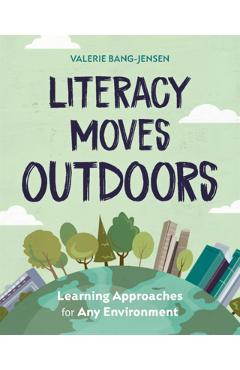
Have you ever thought about what literacy might look like outside of the classroom? Its everywhere! Think about it: the first word a young child may learn to read is STOP, and playing with chalk on a driveway or sidewalk is often a childs first experience with drawing and writing.
What if we take reading and writing out of the classroom and see how it is used, authentically, in the real world? Why is outdoor learning important? There are many proven benefits to nature-based education! Research shows that it can boost academic performance as well as supporting physical, mental, and emotional health.
When you provide outdoor and indoor learning experiences, students can expand their knowledge and apply concepts to the real world.
Inviting students to connect with nature offers them a chance to use their senses to explore, and they are often more engaged and able to focus better.
And lets not forget the benefits of getting kids outside and moving around during the school day! How do you get started teaching literacy outdoors? Literacy Moves Outdoors provides the rationale, resources, and information to help you get started, all organized to help maximize learning and connect what you do outside to what you teach inside.
Each chapter takes a deep dive into a specific approach to literacy that you can move outdoors, including Literacy to Go, Word Gardens, StoryWalks(R), Interpretive Signage, and Literacy Trails.
Discover practical strategies and experiences for supporting literacy development outside of the traditional classroom environment, as well as varied entry points, logistics for implementation, literacy connections, resources, and relevant book lists.
Outdoors can mean a variety of things-a blacktop playground, a small park, sidewalks, or perhaps a patch of woods-and your school setting will shape how you approach outdoor learning.
Literacy Moves Outdoors offers suggestions to adapt to just about any environment, including indoor hallways and communal spaces when you just cant get outside.
You will also find some beginning guidelines related to universal design, including efforts to make learning experiences accessible to all students, enabling them to be independent and participate in a variety of ways while helping you consider space, safety, and strategies to support a wide range of literacy and language skills.
Explore and adopt practices that engage students, meet their interests and needs, and give them the tools to communicate and discove.
Manuel Roubineau
122.32 Lei
Joanna Weaver
94.86 Lei
Jamie Cloud Eakin
180.44 Lei
Supreme Understanding
174.02 Lei
Lpc Csat Barta Ph. D.
104.27 Lei
Lane R. Warenski
193.37 Lei
Pierrer De Cointet
111.32 Lei
Cengage Learning Gale
81.47 Lei
Katherine C. Mooney
273.42 Lei